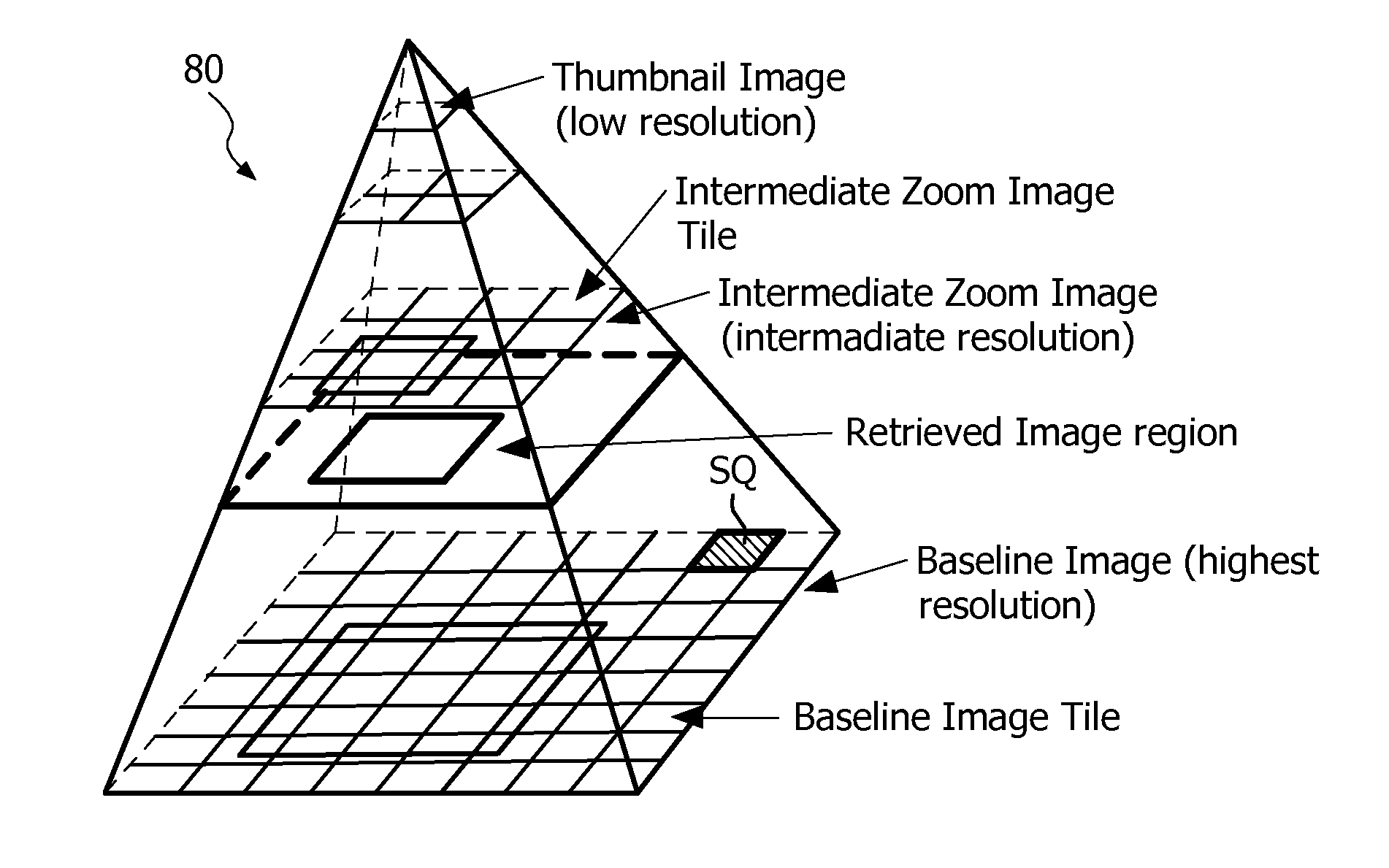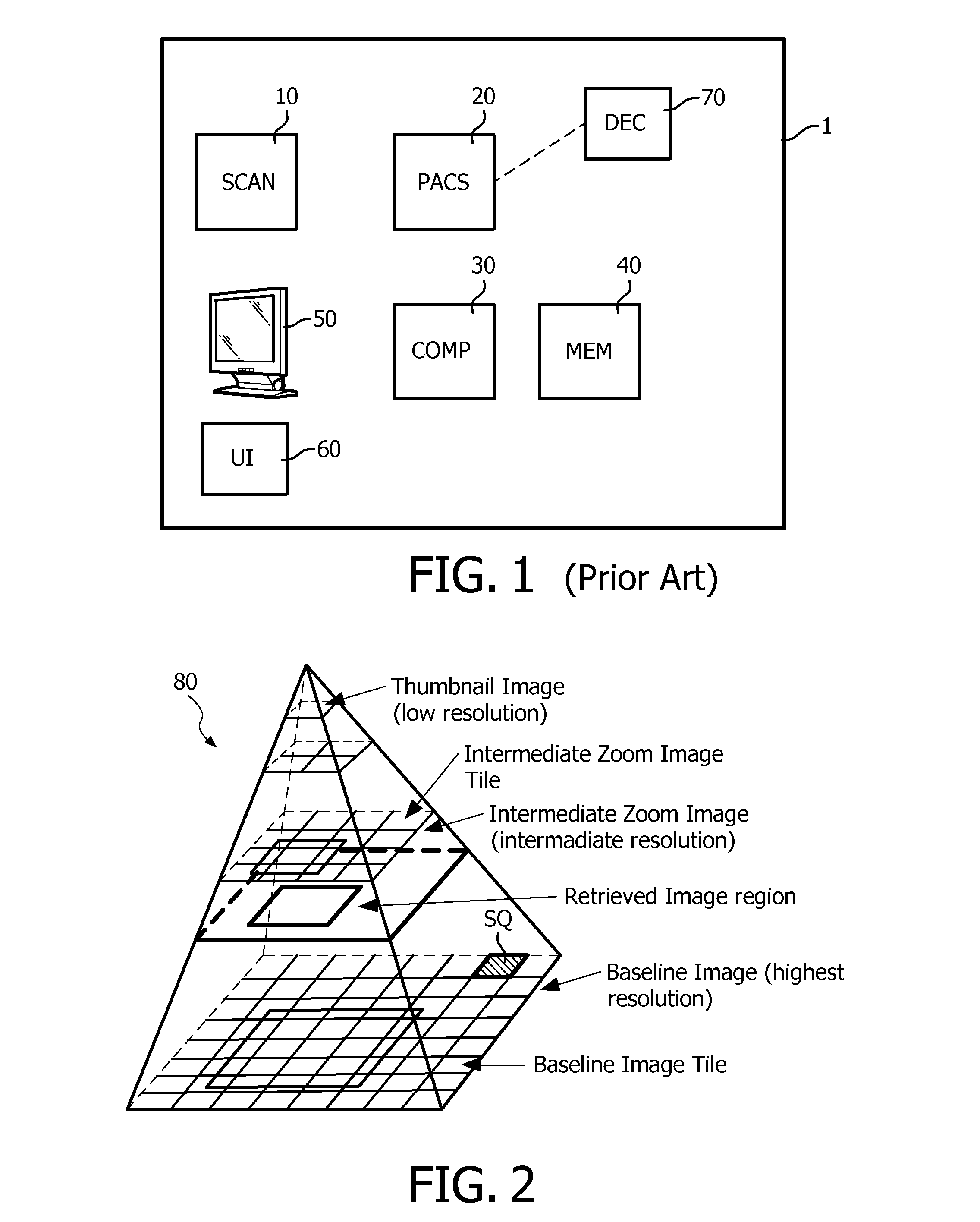Image processing method in microscopy
a microscopy and image processing technology, applied in image enhancement, image analysis, instruments, etc., can solve the problems of difficult to achieve good performance with reasonable optimization, low rendering performance in terms of display speed, and large size of digital images, so as to improve image registration efficiency and reduce image dimensions , the effect of faster computation of spatial transformation
- Summary
- Abstract
- Description
- Claims
- Application Information
AI Technical Summary
Benefits of technology
Problems solved by technology
Method used
Image
Examples
Embodiment Construction
[0060]Preliminarily it should be understood that the term “content”, when referring to an image, indicates any kind of information that can be derived in this image. Such information may typically correspond to certain biological features present in the sample and may typically correspond to information derived from pixel data.
[0061]The terms “transform”, “transform function, “transformation” shall have the same definition.
[0062]The term “area” may preferably refer to a physical portion of the sample under investigation, while the term “region” or “sub-region” may preferably refer to a portion of the image in the digital world.
[0063]The term “sub-region” shall define a portion of a “region”.
[0064]Further, “providing an image” shall encompass various possibilities known in the art such as receiving the image from a scanner, from a storage memory, from a telecommunication link like an intranet network or like internet, from a data structure as described herein after, etc.
[0065]Accordi...
PUM
 Login to View More
Login to View More Abstract
Description
Claims
Application Information
 Login to View More
Login to View More - R&D
- Intellectual Property
- Life Sciences
- Materials
- Tech Scout
- Unparalleled Data Quality
- Higher Quality Content
- 60% Fewer Hallucinations
Browse by: Latest US Patents, China's latest patents, Technical Efficacy Thesaurus, Application Domain, Technology Topic, Popular Technical Reports.
© 2025 PatSnap. All rights reserved.Legal|Privacy policy|Modern Slavery Act Transparency Statement|Sitemap|About US| Contact US: help@patsnap.com



